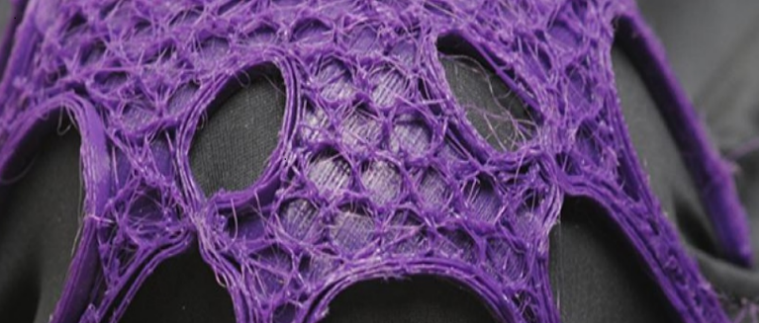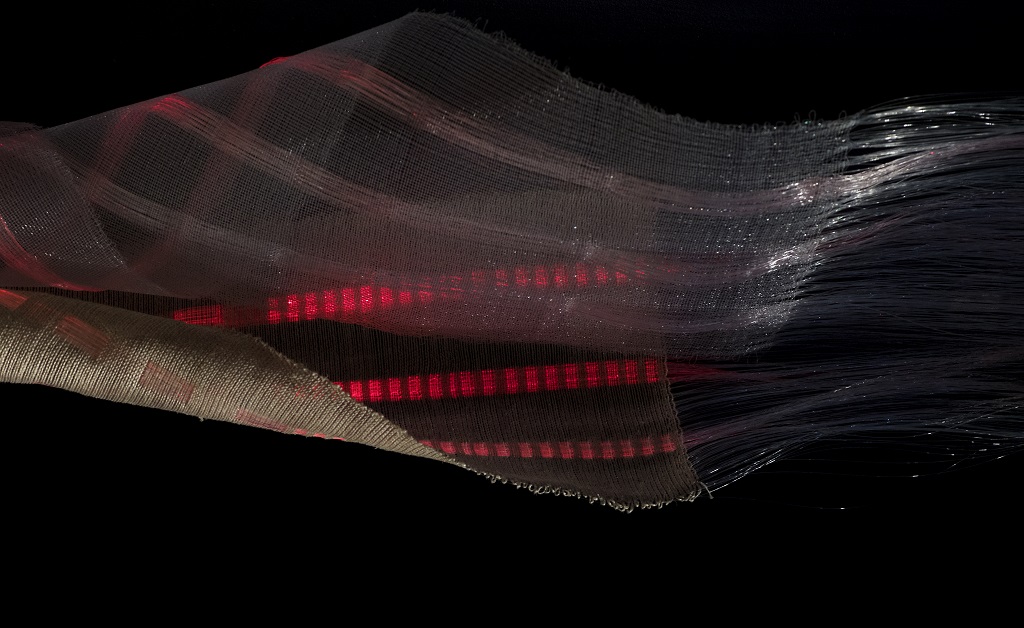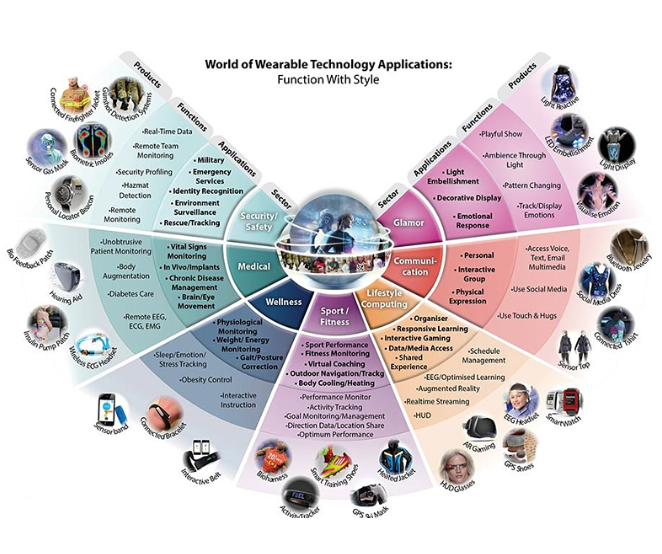The Future of European Smart Textiles: Challenges & Opportunities – Interview with Andreas Lymberis (Part 2)

Andreas Lymberis of the European Commission
Andreas Lymberis has been a research and innovation programme officer with the European Commission (EC) in Brussels since 1999. He heads the European Innovation Council Challenge-based Accelerator sector at EISMEA (European Innovation Council and SMEs Executive Agency), having previously led Wearables and Bioelectronics initiatives for 20 years. A physicist with a Ph.D. in biomedical engineering and sciences, Andreas has robust experience as a researcher/engineer and R&D manager in biomedical technology. He is a senior member of The Institute of Electrical and Electronics Engineers (IEEE) and has published over 60 articles in journals, conference proceedings, and books.
Our team spoke with Andreas about the history of smart textile development in Europe, current research and EC funding initiatives, as well as challenges and opportunities. We would like to express our gratitude to Andreas for sharing his expertise and wealth of information with the SmartX community and invite you to back and enjoy part 2 of this two-part interview.
What are the challenges in terms of smart textile development in Europe?
There are several technical challenges we have yet to meet in order to achieve reliable, performant and manufacturable smart textiles and smart clothing. This includes new component integration methods, e.g. integration and miniaturization of sensors, actuators or power sources that comply with thermal and electrical requirements; new interconnection technologies and technologies for integrating electronics on textile substrates; integration and assembly technologies, e.g. pick-and-place techniques for device mounting, stretchable module integration into the fabric, or chips placement on the foil using self-assembly principles.
The lack of a fully-automated process for integrating electronics into textiles in an affordable way is a concern. Power management and storage are also key features, especially for clothing and wearables. Further development and integration of energy-related systems (e.g. batteries, photovoltaic cells) are required to obtain energy-autonomous, self-powered wearables.
Manufacturing technology for flexible and printed electronics is of paramount importance. To produce such products at high volume and of consistent quality, a scalable and cost-effective manufacturing technology – e.g. based on roll-to-roll processing – needs to be developed. Until now, the process has been relatively labour-intensive with limited scale production.
Finally, there is an overall need for the sector to speed up the development process in key areas, such as 3D Printing of conductive materials, incorporation of dielectric, and polymer semiconducting materials onto textile.

F3D Print: Fabrication of Functional and Perfect Fit Textiles by 3D Printing based on Scanning Technology. Credit: Centexbel
Let’s talk about non-technological barriers: what are the remaining issues facing European smart textile entities?
Building up an ecosystem in Europe that includes equipment providers, platform or network operators, content/app providers and end-user/final consumers, is, according to the large majority of stakeholders, a priority. In several consultations between the EC and the community, it was highlighted that in order to create value, there is a need to establish a good understanding of complex interactions between the actors of the ecosystem.
There are four main non-technological barriers preventing smart textile and wearables to enter massively in the European market:
- The lack of standards and test methods, which are essential, in particularin the area of health and safety, to enable designers and manufacturers to ensure their customers that their products are safe and reliable. Standards are also needed to help the industry comply with regulatory requirements (e.g. electrical safety, electromagnetic compatibilityand biocompatibility);
- The lack of common understanding and effective cooperation models between ecosystem actors, e.g. device makers, network operators, content and application providers, textile producers, artists and end-users. Insufficient connection and communication amongst them hamper the creation of business value and market acceptance;
- The lack of a clear regulatory frameworkproviding at the same time the freedom to innovate and ensuring an appropriate level of protection for users’ health, safety, data, and privacy. The most important areas concerned are data protection, data privacy, free flow of data, liability and consumer protection (e.g. in the field of medical devices); and
- The lack of sufficient education and a low level of awareness, which are essential to fostering user acceptance, which is necessary to make sure that technology is used in a correct manner and for the intended purposes.
Once a solution has been proven technically viable, safety, efficiency, end-user acceptance, regulatory compliance, approval for reimbursement (where needed) and effective marketing will be as critical as the preceding phases of proof of concept or product development.

Image courtesy of Andreas Lymberis
What are your thoughts on the impact of Covid-19 and 5G on the smart textile industry?
The COVID-19 pandemic has hampered the economic stability and growth. The measures implemented in Europe and worldwide have affected the anticipated revenue generation and growth opportunities for most sectors, including smart textiles, clothing, and smart wearables.
However, it is too early to measure the impact of the pandemic, in the longer term, on market figures and trends, already reported in several studies and indicating e.g. an expected high growth of the smart textile and clothing sector with a CAGR (Compound Annual Growth Rate) of more than 20% between 2020 and 2027! The sector will also influence (and be influenced by) the digital revolution, considering the key role it will play in mobile data traffic, new applications (e.g. well-being, gaming, collaborative artistic creations) and businesses.
Moreover, coupled with advances in mobile communication and internet technologies, this field is under rapid transformation, from the ‘world of trackers’ into a realisation of the ‘internet of smart wearables’. 5G communication systems (The European Commission’s 5G Action Plan) will become an enabling factor for the Internet of Things and applications enabled by wearables, e.g. virtual and augmented reality, human-human, and human-computer interaction.

Going forward, where do you see the biggest future opportunities for European smart textile innovators? For instance: the most promising development and areas of future EU support, or specific areas where Europe can outcompete other regions.
Although watches and bands are still dominating the market, other form factors such as clothing, eyewear, hearables, and patches are increasingly gaining importance.
In terms of application areas, the highest expectations are in the healthcare, infotainment, fashion, fitness and wellness, sports and industrial markets.
Europe is particularly strong in achieving the integration of complex heterogeneous technologies (e.g. combining microelectronics, photonics, materials, nanotechnology) into multifunctional prototype systems and testing them in the right environment. This is due to the active presence of universities, RTOs, and SMEs combining multi-disciplinary skills and expertise. Moreover, a strong expertise in industrial equipment provides the tools and techniques for testing and characterisation of these devices (e.g. mechanical stress, humidity).
However, there is a fierce competition in this high economic potential sector and Europe is currently lagging behind the US and South Korea in patent filings, despite the good performance of individual companies with technical textile and medical device expertise.
Nevertheless, Europe is a leader in creativity and innovation and has the most creative designers in the world. This is a strong asset for the competition in smart textile and wearables. Manufacturers and makers in fashion and lifestyle consumer goods (textiles-clothing, footwear, fur, leather and leather products, jewellery, accessories, handbags) is a major pillar of EU creative industries.
With a total annual turnover of ca. 500 billion € and an economic value added of 150 billion €, while employing five million people across the EU, textile and clothing plays an important role in the European manufacturing industry.
Maintaining its competitiveness and moving towards products with a higher value added is of strategic importance to win new markets and compete on a global scale.
Disclaimer: These views are from the author and do not necessarily reflect the ones from the EC. (February 25, 2021)

Application areas and product categories for wearables. Credit: Beecahm Research
Read the first part of our interview, where Andreas discusses the development of smart textiles on the continent and why Europe will lead the next tech disruption.